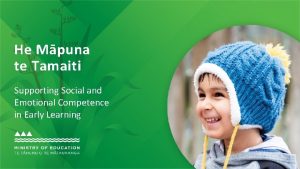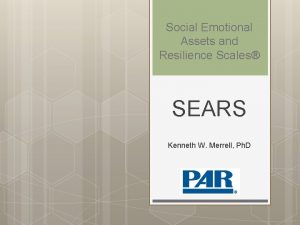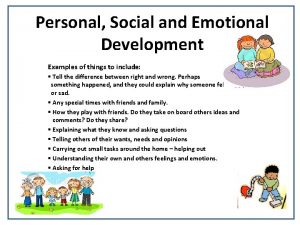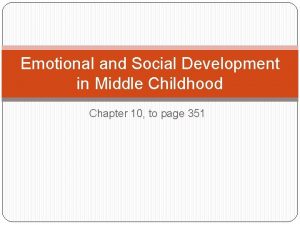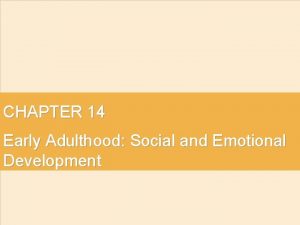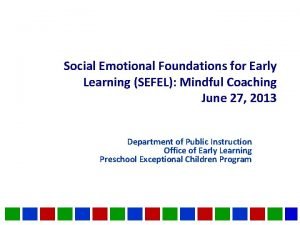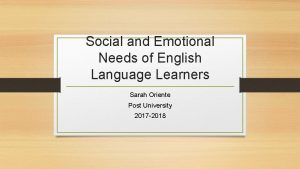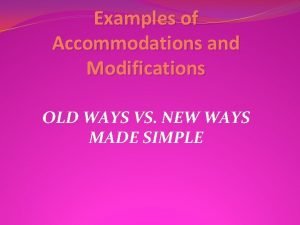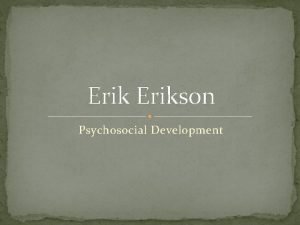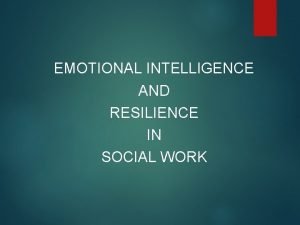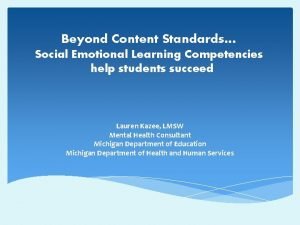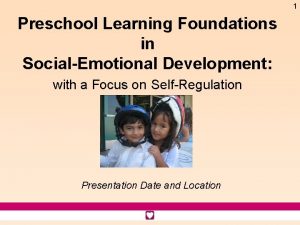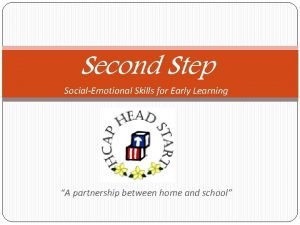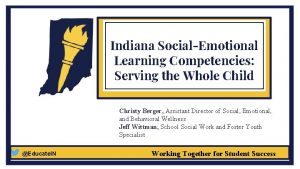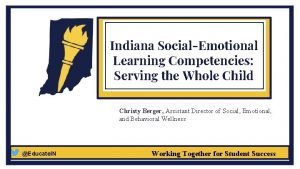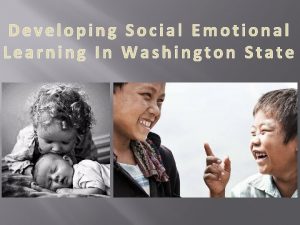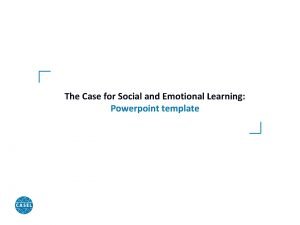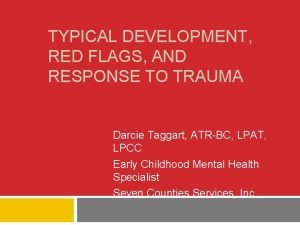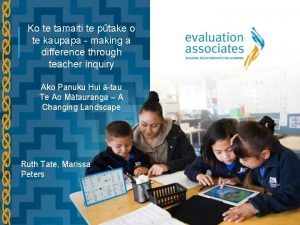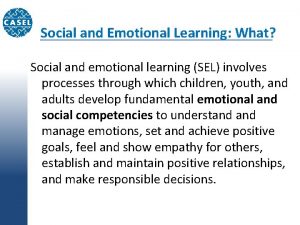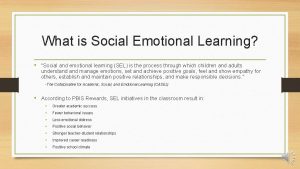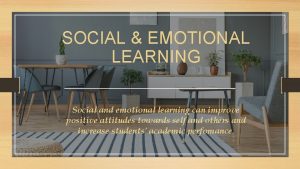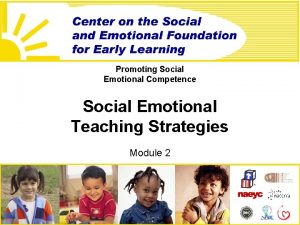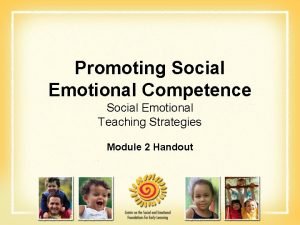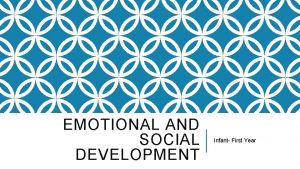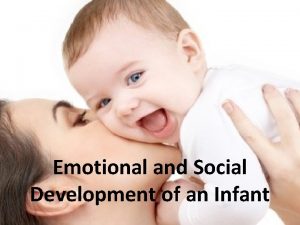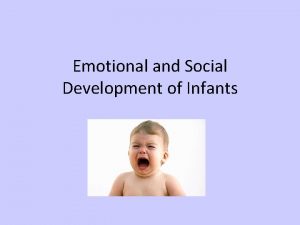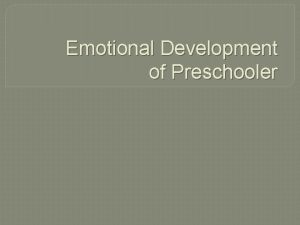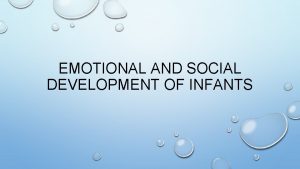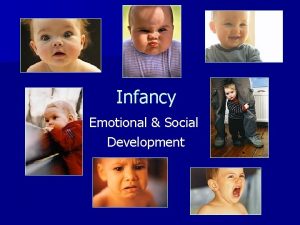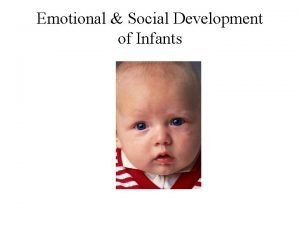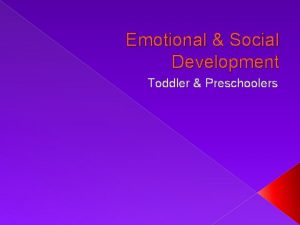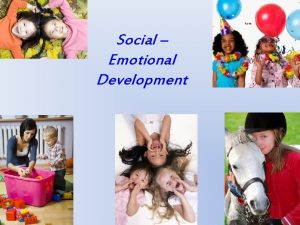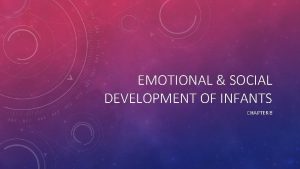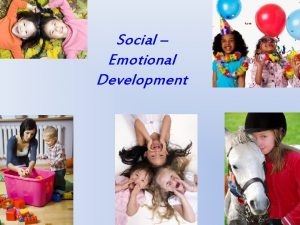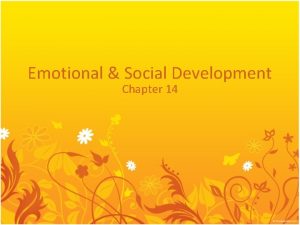He Mpuna te Tamaiti Supporting Social and Emotional























- Slides: 23

He Māpuna te Tamaiti Supporting Social and Emotional Competence in Early Learning

Welcome Tūngia te ururua kia tupu whakarito te tupu o te harakeke. Clear away the overgrowing bush so that the new flax shoots will spring up. Remove barriers to learning, engagement, and wellbeing so that our mokopuna will flourish. education. govt. nz 2

Acknowledgments / Ngā mihi • the writer, Dr Tracy Rohan • the advisory group for the resource: Dr Tara Mc. Laughlin (Massey University); Dr Lesley Rameka (University of Waikato); Associate Professor Sonja Macfarlane (University of Canterbury); Simon Chiaroni (Cognition Education), Julie Houghton, and Liz Winfield (Ministry of Education) • the late Waiariki Grace and Professor Angus Macfarlane, for the title of the resource • those who took part in the consultation on the resource education. govt. nz 3

Purposes of the resource • To support kaiako to understand draw on effective practices that enhance children’s social and emotional competence, engagement, and learning • To help kaiako promote positive behaviour and prevent behaviours that may create barriers to children’s learning and relationships education. govt. nz 4

Components of He Māpuna te Tamaiti • A 112 -page book • A set of cards on Intentional Teaching Practices • A poster • Five introductory videos • This Powerpoint presentation education. govt. nz 5

Key features of the book • Te Whāriki as the foundation • A bicultural document • Promotes culturally responsive, reflective, inclusive practice • Promotes and supports intentional teaching • Supports strong partnerships with whānau education. govt. nz 6

Framework for the book education. govt. nz 7

Introduction and six sections 1. Creating a supportive environment 2. Promoting emotional competence 3. Promoting social competence 4. Supporting learning and engagement 5. Understanding behaviour 6. Reflection, inquiry, and, problem solving education. govt. nz 8

Social and emotional competence education. govt. nz 9

Learning story: Mason At a Dunedin centre, three-year old Mason often begins his day feeling a mix of emotions that are hard for him to manage. He is a naturally high-energy boy who can sometimes react intensely, particularly to new situations or people. He often struggles to adapt to change and can be easily bothered by things that he finds uncomfortable, such as being hungry. In the mornings, Mason is excited to see his friends and keen to carry on with projects from the day before. He feels disappointed if his friends have arrived before him and chosen different activities with other peers. He is always sad to say goodbye to his Nana, who drops him off in the mornings on the way to work. Often he hasn’t eaten a good breakfast, because of needing to hurry in the mornings and the excited feelings in his tummy. This complex mix often means that Mason starts his day in a heightened emotional state and finds it difficult to settle. education. govt. nz 10

Learning story: Mason Identify with your neighbour(s): • one or two strategies Mason’s Nana could use to support his transition into the centre • one or two strategies the kaiako could use to support continuity and predictability for Mason education. govt. nz 11

Each section includes … 1. Direct links, quotes, and references to Te Whāriki 2. Key strategies unpacked and illustrated over 1– 4 pages 3. Stories from practice 4. Professional learning activities 5. Links to further information (websites, videos, articles etc) – go to tewhariki. tki. org. nz/en/teaching-strategies-and-resources to download the PDF of the book and activate the links 6. Screened asides on specific topics 7. Summary key points education. govt. nz 12

The role of the kaiako education. govt. nz 13

Learning story: Connie (p. 56) With your neighbour(s): • read the definition of each of the following intentional teaching practices • identify which of them the kaiako are using with Connie. education. govt. nz 14

Understanding behaviour education. govt. nz 15

Understanding behaviour • Valuing diverse cultural views of behaviour • Behaviour as communication • Antecedents: Using a preventative approach • Behaviours: Interpreting and describing behaviour • Consequences: Responding to behaviour – Positive and negative reinforcement – Natural and logical consequences – Ignoring – The problems with punishment – Teaching behaviour education. govt. nz 16

The ABC of behaviour • The Antecedent – what happens before the behaviour • The Behaviour itself • The Consequence – what happens after the behaviour What are the A, B, and C for Ricky in this story? What is the purpose of his behaviour? education. govt. nz 17

Applying understandings about behaviour education. govt. nz 18

Reflection, problem solving, and self-assessment education. govt. nz 19

Self-assessment tool • Supports internal evaluation • Based on the strategies He Māpuna promotes • Most kaiako will complete it as a team • Will also help you to review your physical, social, and learning environment • Also possible to use it to reflect on your individual practice • Available as an interactive PDF at tewhariki. tki. org. nz/en/teaching-strategies-and-resources • Can be helpful to identify what aspects of practice might be best to work on education. govt. nz 20

Next steps How will you work with He Māpuna te Tamaiti? 1. Team assessment, learn, try, and review cycle 2. Learn, share, do, and review 3. Child-focused support 4. Examining and supporting practice 5. Another approach education. govt. nz 21

Kia kaha tō mahi

 He māpuna te tamaiti self-assessment tool
He māpuna te tamaiti self-assessment tool Social emotional assets and resilience scales
Social emotional assets and resilience scales Fictional character examples
Fictional character examples Middle childhood social and emotional development
Middle childhood social and emotional development Middle adulthood socioemotional development
Middle adulthood socioemotional development Emotional development for early adulthood
Emotional development for early adulthood Social and emotional wellbeing framework
Social and emotional wellbeing framework Social and emotional foundations for early learning
Social and emotional foundations for early learning Social and emotional development in late adulthood
Social and emotional development in late adulthood Social thinking adalah
Social thinking adalah Social thinking social influence social relations
Social thinking social influence social relations Social emotional needs of ell students
Social emotional needs of ell students Social emotional present level of performance examples
Social emotional present level of performance examples Autonomy vs shame and doubt example
Autonomy vs shame and doubt example What is emotional resilience in social work
What is emotional resilience in social work Social emotional learning standards michigan
Social emotional learning standards michigan Preschool learning foundations volume 1
Preschool learning foundations volume 1 Second step social emotional skills for early learning
Second step social emotional skills for early learning New jersey social emotional learning standards
New jersey social emotional learning standards Idoe sel
Idoe sel Idoe mtss
Idoe mtss Social emotional learning washington state
Social emotional learning washington state Social emotional learning powerpoint
Social emotional learning powerpoint Megg thompson match game
Megg thompson match game
